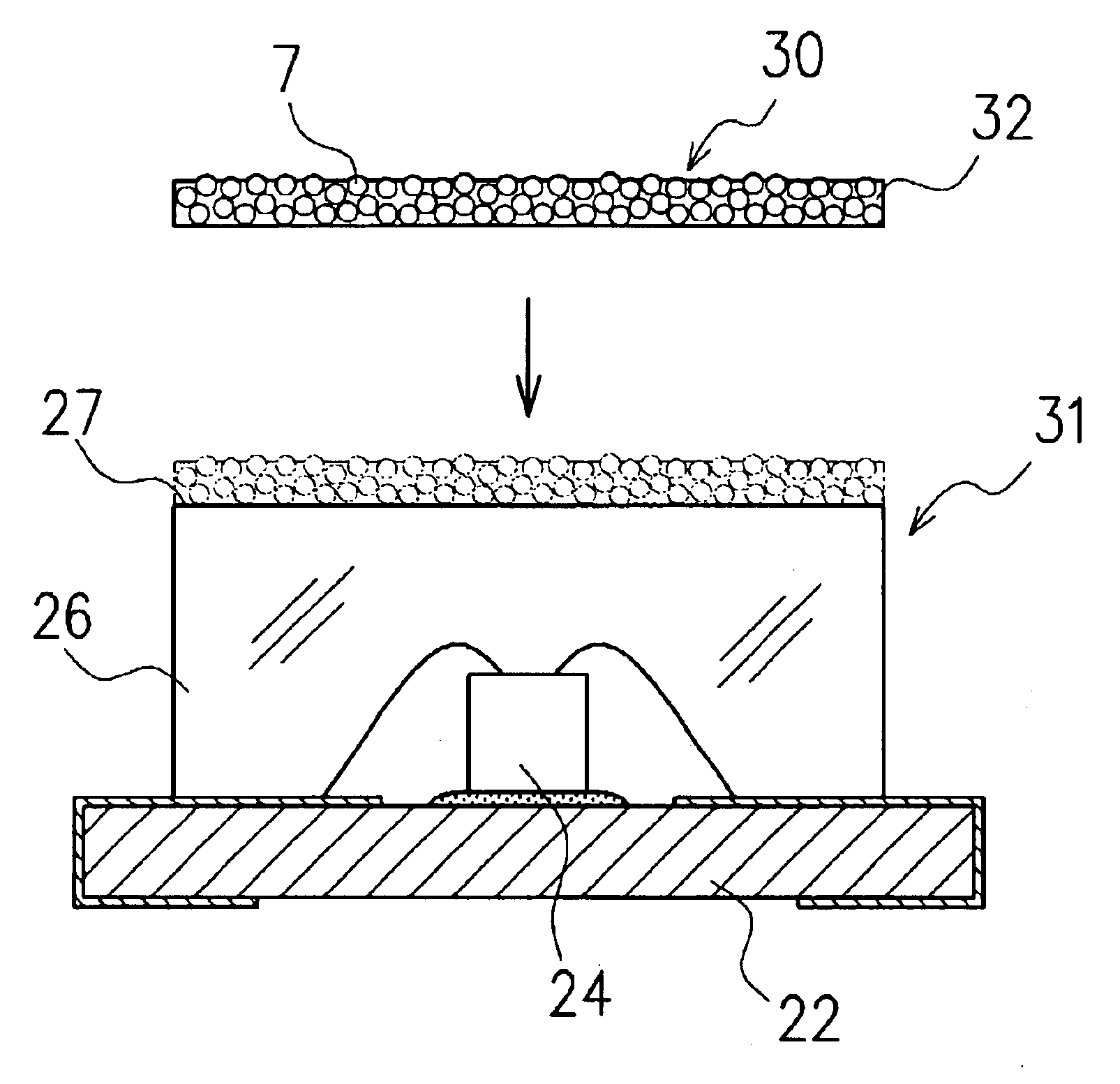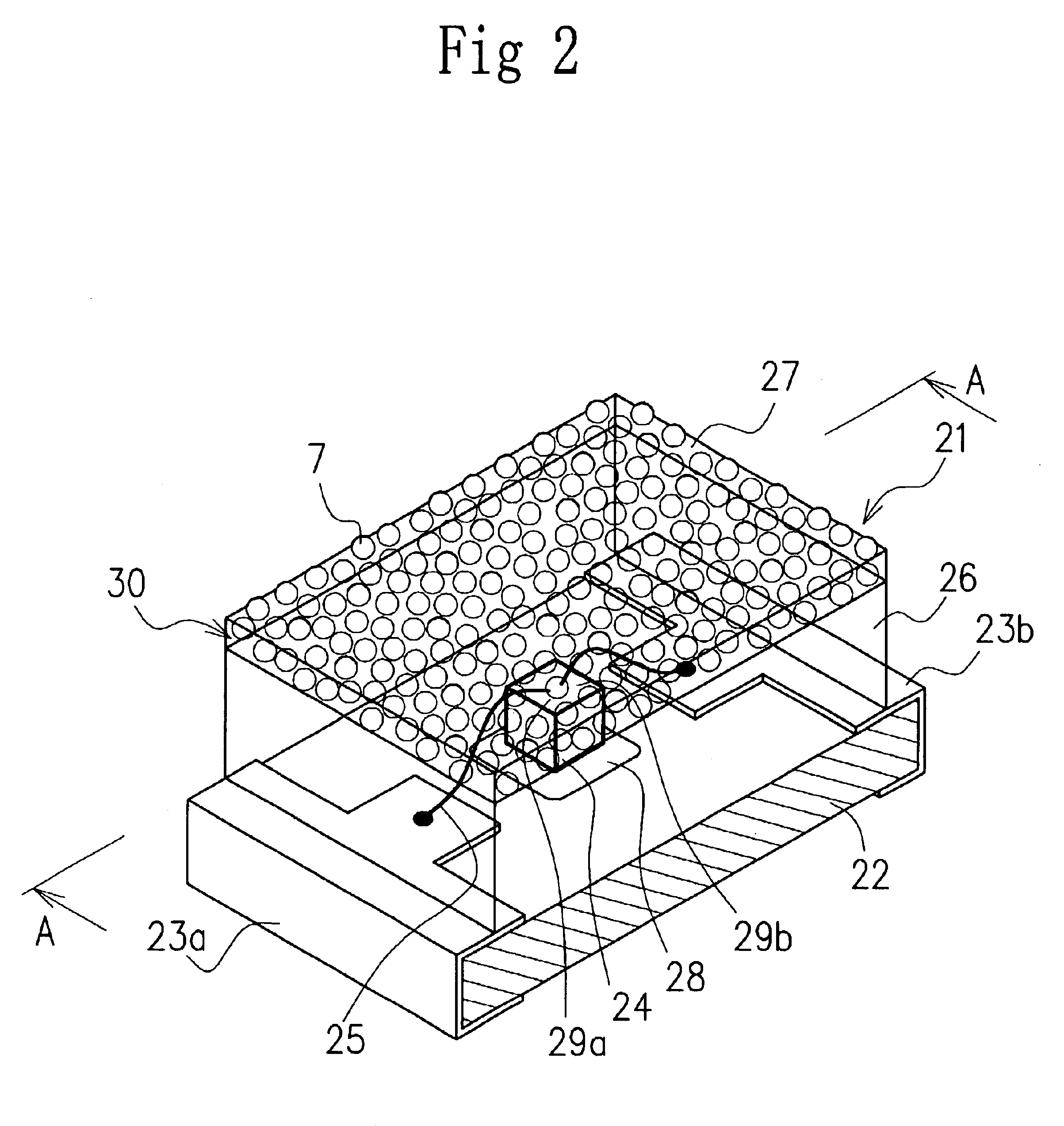Light emitting diode
a technology of light-emitting diodes and diodes, which is applied in the direction of basic electric elements, electrical equipment, semiconductor devices, etc., can solve the problem of not being able to produce uniform, bright illumination
- Summary
- Abstract
- Description
- Claims
- Application Information
AI Technical Summary
Benefits of technology
Problems solved by technology
Method used
Image
Examples
Embodiment Construction
Now, light emitting diodes embodying the present invention will be described in detail by referring to the accompanying drawings.
FIG. 2 and FIG. 3 show one embodiment of a light emitting diode according to this invention. The light emitting diode 21 has a substrate 22 made of a glass epoxy resin or BT (Bismaleimide Triazine) resin, a pair of electrodes 23a, 23b attached to the substrate 22, a light emitting element 24 mounted on the substrate 22, bonding wires 25 for electrically connecting the light emitting element 24 to the electrodes 23a, 23b, a resin sealant 26 for sealing the light emitting element 24, the bonding wires 25 and also connecting portions between the electrodes 23a, 23b and the bonding wires 25, and a light scattering layer 30 formed on an outermost layer of the resin sealant 26.
The electrodes 23a, 23b may be mounted on an external substrate such as a mother board not shown.
The light emitting element 24 is formed of, for example, a small cubic silicon chip. The li...
PUM
 Login to View More
Login to View More Abstract
Description
Claims
Application Information
 Login to View More
Login to View More - R&D
- Intellectual Property
- Life Sciences
- Materials
- Tech Scout
- Unparalleled Data Quality
- Higher Quality Content
- 60% Fewer Hallucinations
Browse by: Latest US Patents, China's latest patents, Technical Efficacy Thesaurus, Application Domain, Technology Topic, Popular Technical Reports.
© 2025 PatSnap. All rights reserved.Legal|Privacy policy|Modern Slavery Act Transparency Statement|Sitemap|About US| Contact US: help@patsnap.com



